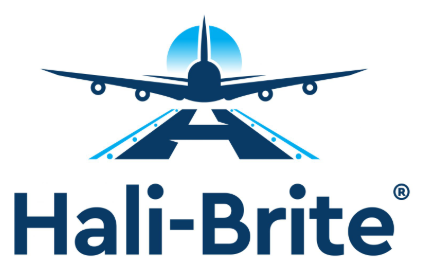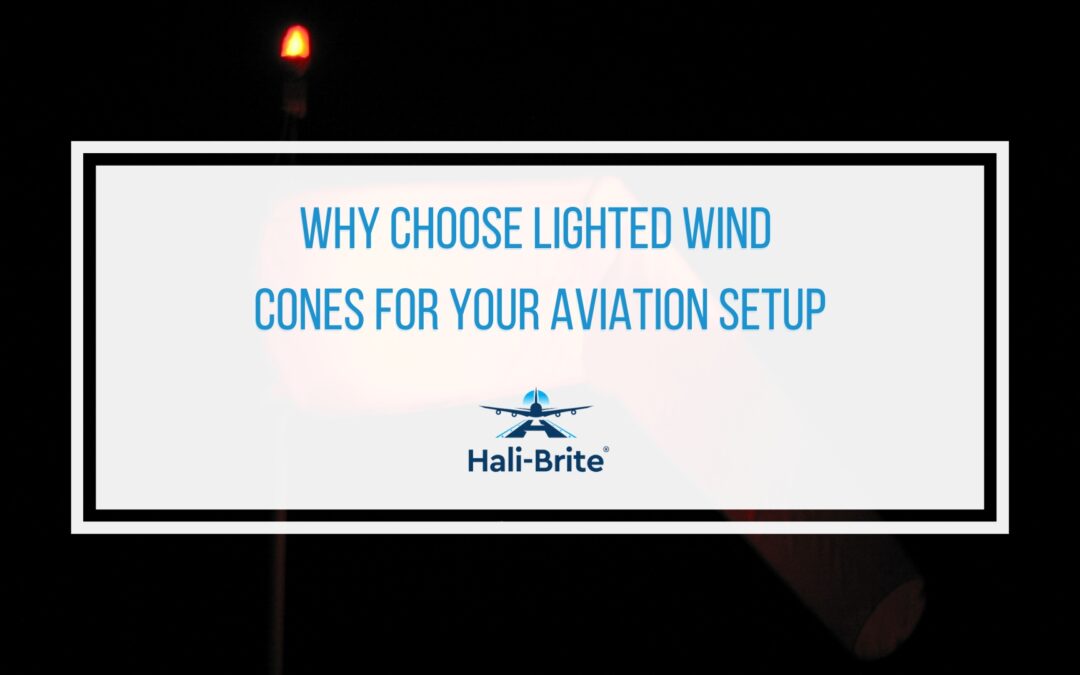Wind cones, or windsocks, are indispensable tools in aviation, providing real-time information about wind direction and speed. When you’re operating an aircraft, whether it’s taking off, landing, or maneuvering on the ground, knowing which way the wind is blowing is critical. These wind direction indicators help guide your every decision, ensuring safe and efficient operations.
- Why Lighted Wind Cones Are Essential for Nighttime Operations
- Features That Make a High-Quality Lighted Wind Cone
- The Importance of Maintenance and Proper Installation
- Improve Aviation Safety with Hali-Brite’s Lighted Wind Cones Today!
However, having a wind cone won’t help much if you can’t see it clearly, particularly when flying at night or in low visibility conditions. That’s why lighted wind cones have become an essential feature at airports, heliports, and private airstrips worldwide. Let’s explore how lighted wind cones enhance visibility and safety and why you should consider adding them to your aviation setup.
Why Lighted Wind Cones Are Essential for Nighttime Operations
A wind cone that’s easy to see in daylight can become invisible the moment dusk settles in—unless it’s properly illuminated. Without adequate lighting, pilots have to rely on inaccurate information about wind conditions, especially when landing at smaller airports or private fields without Air Traffic Control (ATC). Here’s how lighted wind cones help solve that problem:
Improved Visibility in Low-Light Conditions
Whether you’re contending with fog, heavy rain, or simply the darkness of night, a lighted wind cone stands out clearly. The brightness ensures that pilots can quickly interpret wind direction and approximate wind speed when preparing for landing or takeoff.
Reduced Risk of Misjudgment
If you can’t see the wind cone clearly, you could end up with a dangerous crosswind approach or a miscalculated takeoff run. A lighted wind cone ensures crucial information is always visible, reducing the likelihood of errors and helping to avoid runway excursions or incursions.
Enhanced Safety for Pilots and Ground Crews
Better visibility isn’t just about the pilot in command. Ground crews benefit from a clear indication of wind direction, allowing them to position themselves and equipment appropriately, which is particularly important in operations involving helicopters on helipads or vertiports.

Features That Make a High-Quality Lighted Wind Cone
Not all wind cones are created equal. To ensure you meet both performance expectations and safety regulations, you must pay attention to the following core features:
Light-Emitting Diode (LED) Lighting
Traditional wind cones rely on incandescent or halogen bulbs, which consume more power and generate more heat. By contrast, wind cones with LED lamps last longer, often up to 50,000 hours or more, and use less energy. Plus, LED-lit wind cones are more resistant to vibrations and temperature fluctuations, making them ideal for aviation environments.
FAA Compliance
The Federal Aviation Administration (FAA) has strict guidelines for lighted wind cone visibility and photometric output. If you plan to install a lighted wind cone, ensure it meets or exceeds the following specifications:
-
-
- Style I-A (Externally Lighted)
-
Enough light fixtures must provide a minimum of 2 foot-candles (about 21.5 lux) of illumination on any point of the horizontal plane described by the fully extended cone. Essentially, the upper surface of the windsock must remain well-lit throughout its rotation.
-
-
- Style I-B (Internally Lighted)
-
These models need backup or redundant light sources so that if one light source fails, the wind cone isn’t rendered useless. Each top and lateral surface of the windsock fabric must have an average luminance of 10 to 30 foot-lamberts (fL), with a minimum luminance of 2 fL at any point.
Moreover, there must be minimal glare to prevent visual disturbances that can distract or blind pilots. All wiring must be properly secured and protected from the elements, ensuring consistent and reliable operation over time.
Adjustable Lighting Options
Different weather conditions can demand different levels of illumination. Some wind cones include adjustable brightness settings to adapt to fog, rain, or other low-visibility scenarios, ensuring the wind cone remains visible without creating excessive glare, which can be as problematic as insufficient lighting.
The Importance of Maintenance and Proper Installation
Even the best-lighted wind cone won’t perform well if it’s poorly maintained or incorrectly installed. As you work to keep your pilots and ground crews safe, make sure you prioritize regular checks and professional installation.
Routine Inspections
Check the wind cone assembly on a scheduled basis—weekly, monthly, or as recommended by the manufacturer. Look for issues with the bulbs or LED modules, signs of corrosion on the mounting pole, and any wear and tear on the wiring. Inspect the windsock fabric for tears, fading, or other damage that might reduce visibility.
Wiring and Electrical Components
Faulty wiring can lead to flickering or total loss of light, both of which are safety hazards. Ensure that the wiring is protected within electrical conduits or the structure of the wind cone assembly. Keep an eye out for exposed or damaged cables, especially if you operate in areas with harsh weather or wildlife that might gnaw on wiring.
Placement and Alignment
Wind cones should be positioned in a way that is free from obstructions, such as hangars, tall fences, or parked aircraft. If pilots can’t see the wind cone from the cockpit, it defeats the purpose. In addition, proper alignment ensures that the wind cone rotates freely and accurately indicating wind direction.
Preventing Unexpected Failures
A burned-out bulb or dead battery, if you have a solar-powered wind cone, can jeopardize flight safety. Make sure your wind cone system is always up to operational standards to minimize the risk of last-minute scrambles. Regular checks are a small price to pay compared to the potential costs of an aircraft incident resulting from poor wind information.
Improve Aviation Safety with Hali-Brite’s Lighted Wind Cones Today!
Hali-Brite has built a solid reputation for delivering FAA-approved wind cones—both lighted and unlighted—that are designed for durability, reliability, and ease of maintenance. We provide solar-powered options for locations without easy access to a reliable power grid, offering you more flexibility in remote or off-the-beaten-path settings. Contact us today at (218) 454-095 or here to learn more about our products. Let us help you create a safer, more efficient airfield!

